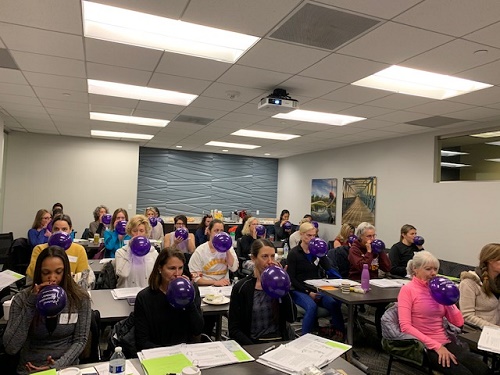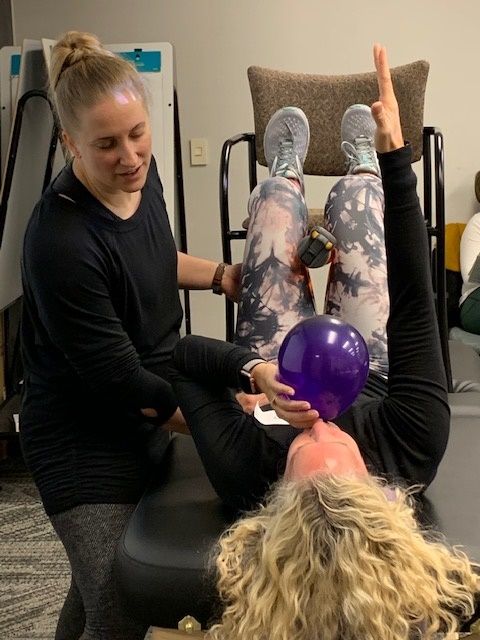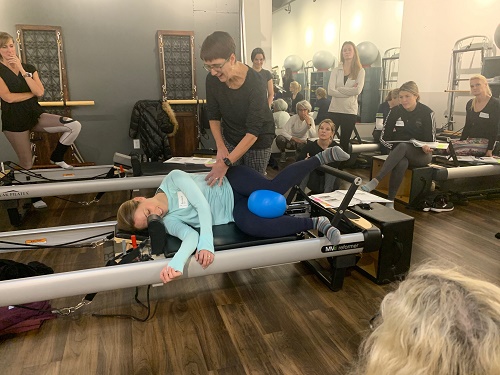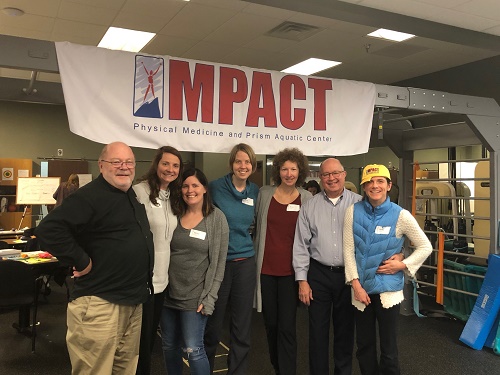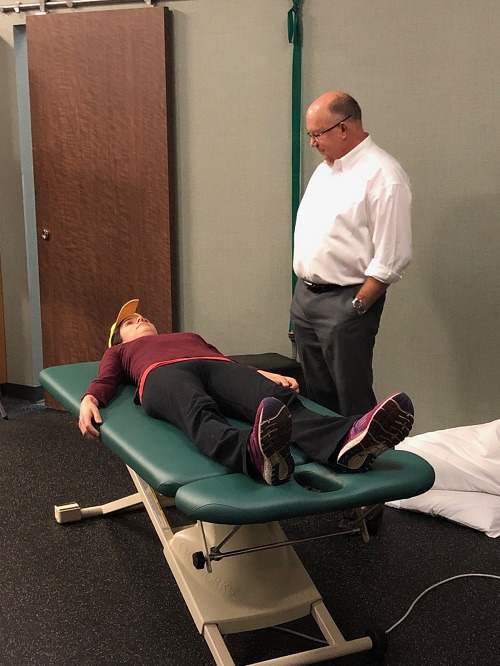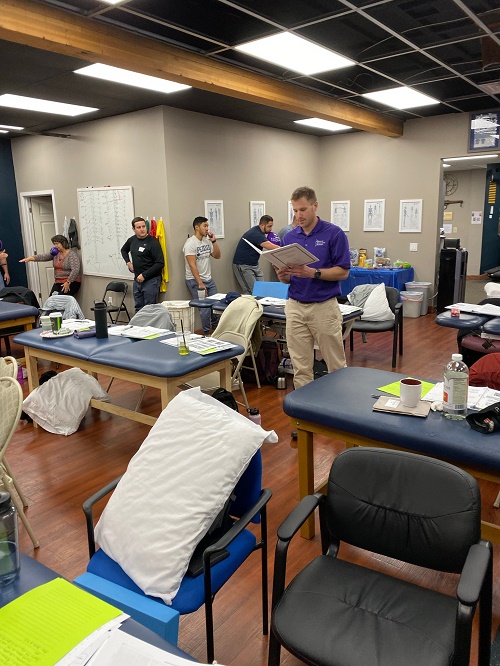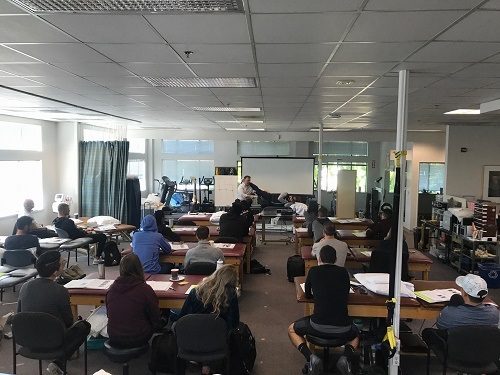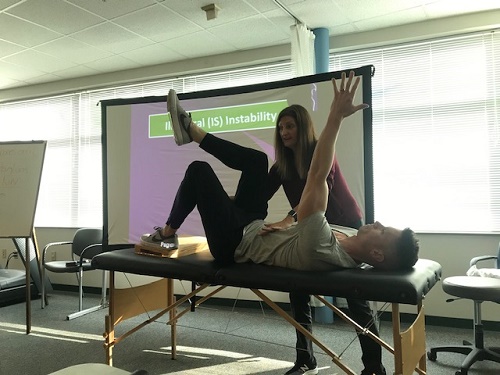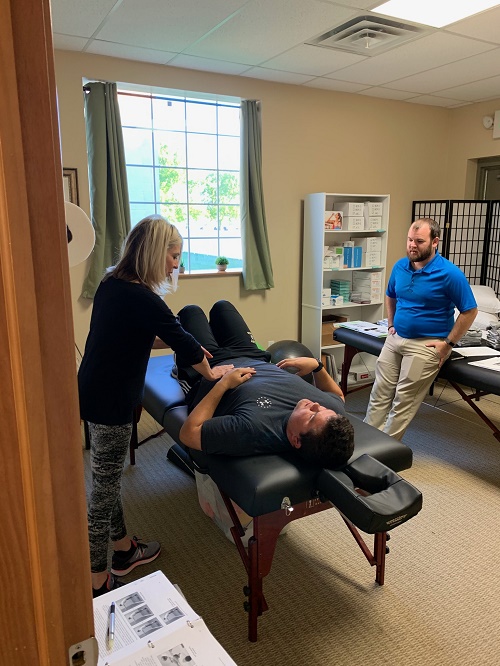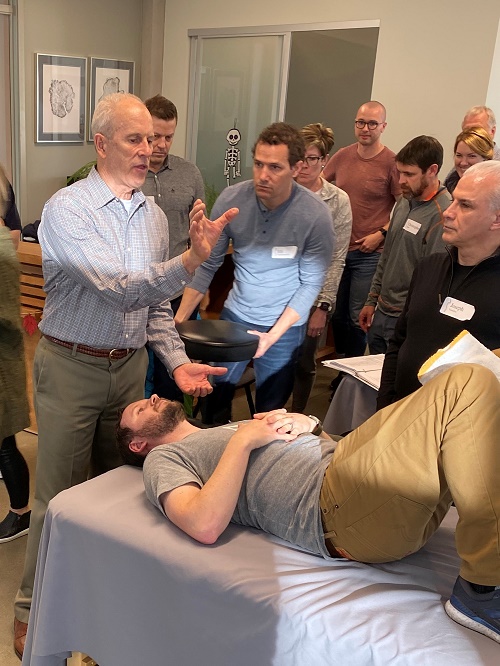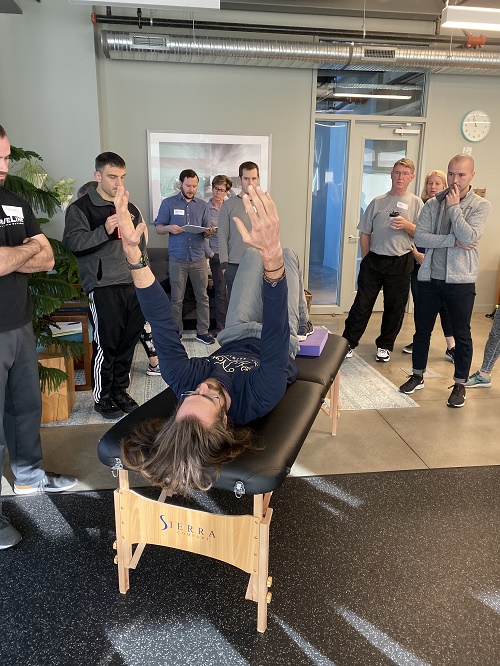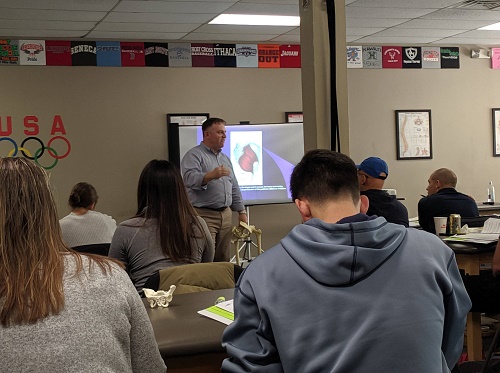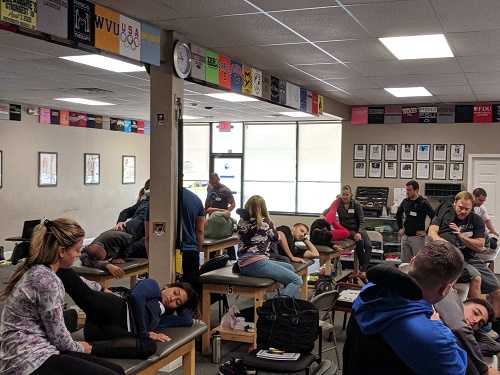Advanced Integration and specifically the Integration symbol itself, represent one’s ability to integrate not only the Primary Course concepts, but also one’s ability to recognize the asymmetrical patterns of behavior themselves. In fact your predisposition, perspectives and past experiences will all dictate how you perceive this symbol and consequentially appreciate this 4 day course. Advanced Integration allows us to come together once a year, for a detailed, didactic and sometimes difficult discussion of the most advanced considerations covered in Myokinematic Restoration, Postural Respiration and Pelvis Restoration throughout the year. It allows us to welcome individuals with various degrees of professional practice, differing levels of clinical understanding and multiple locations of living across the globe. This year we were joined by our PRI Family from 26 states, as well as the countries of Malaysia, Australia, Iceland, Germany and Japan. With Valerie Chai (PRC Class of 2019) traveling 35 hours to attend, the dedication of these individuals is something that is continually humbling, and appreciated beyond our measure.
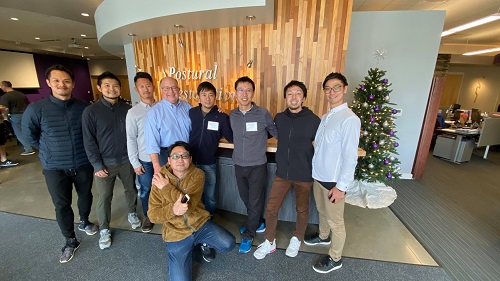
Our Japanese family continues to grow and integrate their own understanding of these concepts as they are now offering all three Primary Courses, and working to present Impingement & Instability in the year ahead. We are also excited to announce the creation of the PRP, (Postural Restoration Provider ™ ) credentialing program that will be offered in Japan in the years ahead. Following these four days we were able to spend an additional two days with the PRC class of 2019, and welcomed 14 new providers from these countries.



The four days of Advanced Integration included some of the best presentations we have seen from Lori Thomsen, Jennifer Poulin and a special appearance by James Anderson representing the concepts they teach throughout the year in the Myokinematic, Pelvis, and Postural course work. If you have not heard these individuals teach this material I highly encourage you to attend one of their courses in 2020, as well as any other Faculty Member that may challenge your current understanding by receiving a different perspective from a different presenter.




The fourth day in particular allows us to reflect solely on Curvatures of the Spine and the effects that Torsion, Torticollis, and too much Torque can have on our already twisted systems. Lisa Mangino, Jean Masse, and Susan Henning have truly spent the better part of their collective careers to understand these concepts and the chance to learn from their intervention strategies was truly a gift to us all.

It is hard to wrap up an entire year of PRI course work through this one four day event. However the opportunity it gives us to come together as a family and challenge each other in a positive manner is one that we never take for granted. As you reach towards the year ahead, may you all appreciate the journey this past year has been for you as we do each December. May you reflect on those that mean the most to you along that journey, and welcome the challenges that will continue in the year ahead.

Our PRI Family starts with our Faculty and Staff and extends from there to all of you. I wish you and your Families a Happy Holiday Season and an Integrative year ahead!






